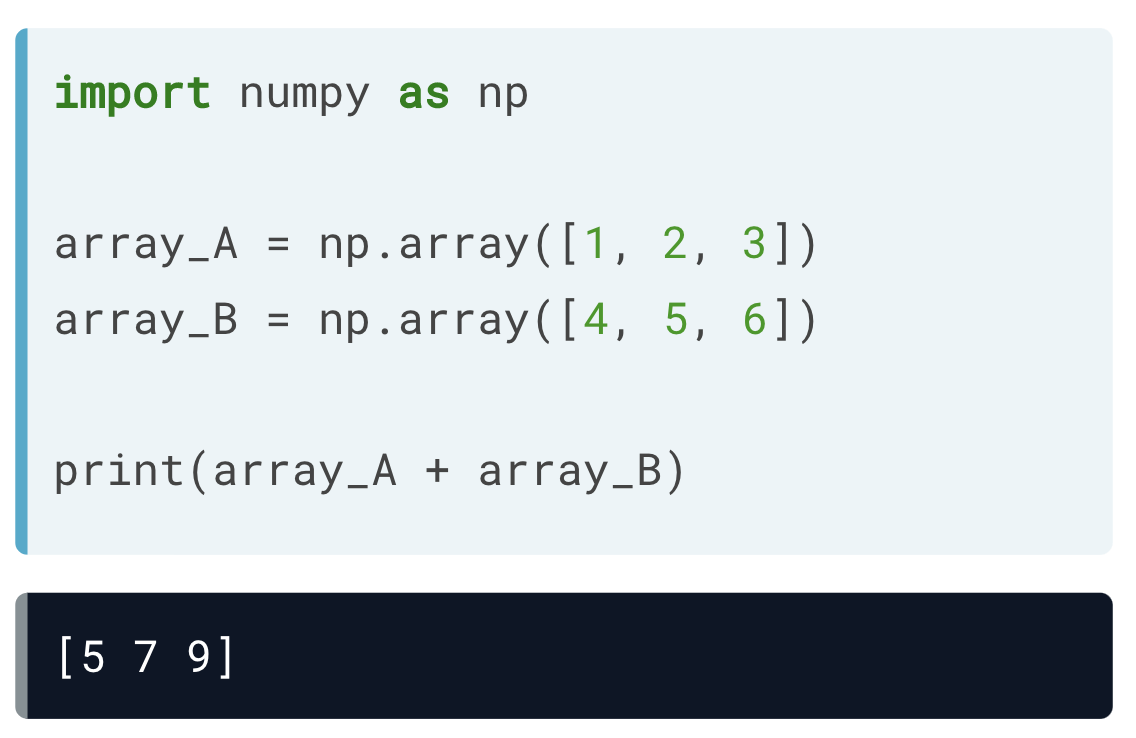Array’s are the foundation for all data science in Python. Arrays can be multidimensional, and all elements in an array need to be of the same type, all integers or all floats, for example.
In Python, you can create new datatypes, called arrays using the NumPy package. NumPy arrays are optimized for numerical analyses and contain only a single data type.
You first import NumPy and then use the array() function to create an array. The array() function takes a list as an input.

The type of my_array is a numpy.ndarray.

Example of creating an Array
In the below example, you will convert a list to an array using the array() function from NumPy. You will create a list a_list comprising of integers. Then, using the array() function, convert it an array.

Advantages of using an Array
- Arrays can handle very large datasets efficiently
- Computationally-memory efficient
- Faster calculations and analysis than lists
- Diverse functionality (many functions in Python packages). With several Python packages that make trend modeling, statistics, and visualization easier.
Example of Array operation
In the below example, you add two numpy arrays. The result is an element-wise sum of both the arrays.

Example of Array indexing
You can select a specific index element of an array using indexing notation.

You can also slice a range of elements using the slicing notation specifying a range of indices.

Example of a List to Array
In the below example, you will import numpy using the alias np. Create prices_array and earnings_array arrays from the lists prices and earnings, respectively. Finally, print both the arrays.

When you run the above code, it produces the following result:
[170.12 93.29 55.28 145.3 171.81 59.5 100.5 ]
[ 9.2 5.31 2.41 5.91 15.42 2.51 6.79]
To learn more about NumPy arrays in Python
#python #developer
